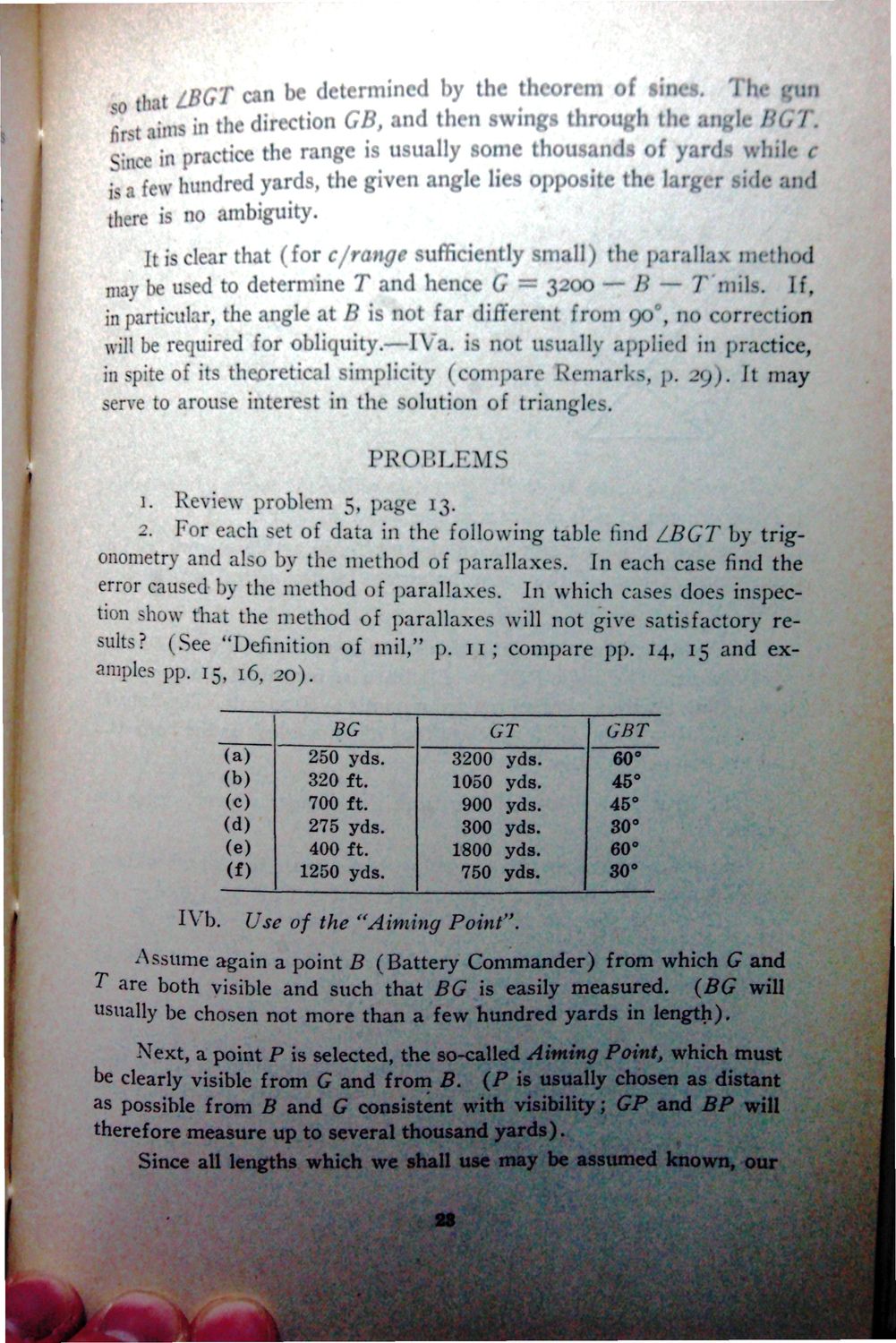Caption: War Publications - WWI Compilation 1923 - Article 46
This is a reduced-resolution page image for fast online browsing.

EXTRACTED TEXT FROM PAGE:
The gu ii tot IBGT can be determined by the theorem aims in the direction GB, and then swings through c some thousands of yards hundred yards, the given angle lies opposite the larger | ambiguity /range may be used to detenu far wi lj<>0 1 Ii > J mils, [f, required for obliquity.— IVa. is not usually apj>ii<rl j n practice, of its theoretical simplicity (conii-aiv Remarks, n. 20). It mav serve to arouse interest in the solution of triangles. PROBLEMS 1. Review problem 5, page 13. 2. For each set of data in the following table find IBGT by trigonometry and also by the method of parallaxes. In each case find the error caused by the method of parallaxes. Jn which cases does inspection show that the method of parallaxes will not give satisfactory re1 sults.-' (See "Definition of mil/ p. n ; compare pp. 14, 15 and examples pp. 15, 16, 20). BG (a) (b) (c) (d) (e) (f) 250 yds. 320 ft. 700 ft. 275 yds. 400 ft. 1250 yds. GT 3200 1050 900 300 1800 750 yds. yds. yds. yds. yds. yds. GBT 60° 45° 45° 30° 60° 30° IVb.. Us, of the "Aimi ng Point". 9 Assume again a point B (Battery Commander) from which G and T are both visible and such that BG is easily measured. (BG will usually be chosen not more than a few hundred yards in length). Next, a point P is selected, the so-called Aiming Point, which must be clearly visible from G and from B. (P is usually chosen as distant as possible from B and G consistent with visibility; GP and BP will therefore measure up to several thousand yards). Since all lengths which we shall use may be assumed known, our
|